For the second weekend in a row the skies were blue, the birds were singing, and flowers were bursting open everywhere you looked, spring in Britain can be truly magical when it puts its mind to it! The weekend's natural history started with the moth trap, although some chilly winds on Friday night meant the catch was significantly down on the previous weekend's bonanza. There were ones and twos of the usual spring suspects, Common Quaker, Small Quaker and Early Grey, joined by the first Hebrew Character of the year, and a less predictable companion in the shape of the 4th Satellite for the garden.
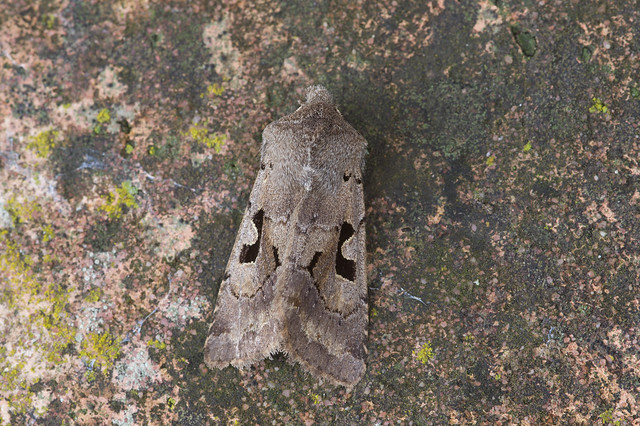 |
| Hebrew Character |
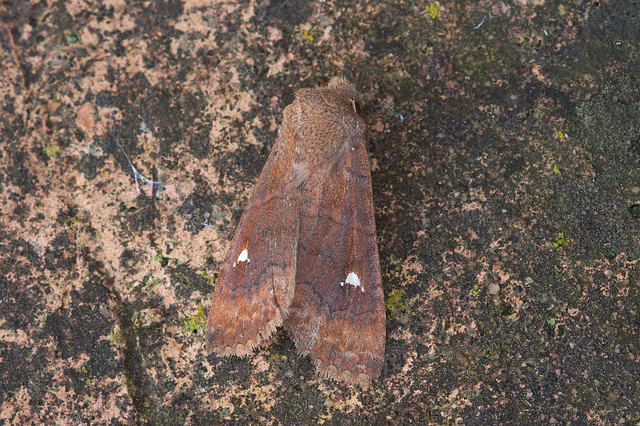 |
| Satellite |
Saturday was devoted mainly to watching England fall agonisingly short of claiming the 6 nations title, but in a break in play I had a quick wander around the garden and found a Tarnished Plant Bug chilling out on some of the daisy like flowers which have emerged in my wild flower patch. These small drab insects are one of five species in the genus Lygus, which have been causing headaches for entomologists for generations. Fortunately my photo just about shows the very dense coating of hairs which is the key character to distinguish the tarnished plant bug from its congeners.
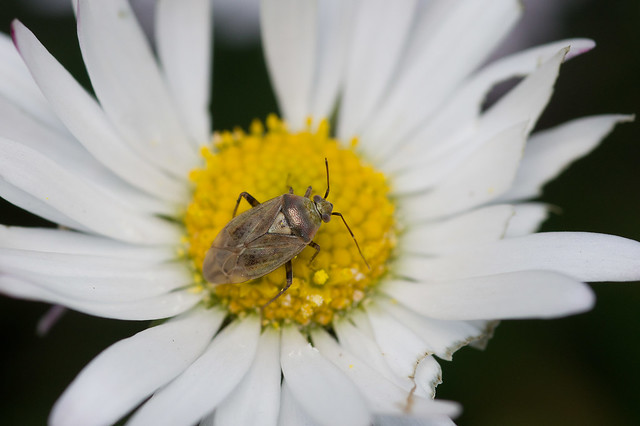 |
| Tarnished Plant Bug |
With the weather looking milder I left the moth trap out, hoping to add an Oak Beauty to the list, but had to settle for an equally characteristic, if slightly less beautiful, early season moth in the shape of the micro-moth Diurnea fagella, which resembles a miniature March Moth.
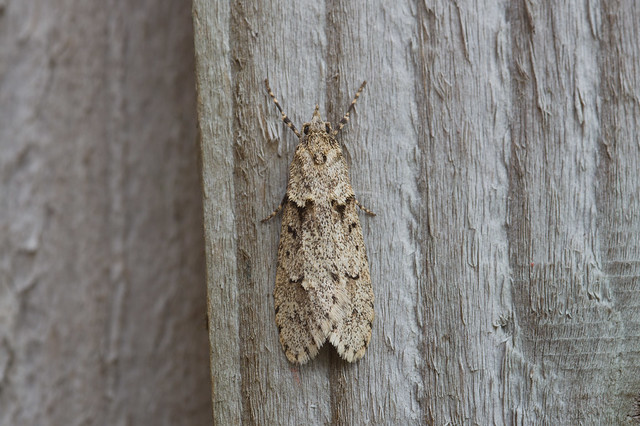 |
| Diurnea fagella |
After Saturday's inactivity I was determined to make the most of the weather and make a significant addition to the list, and it quickly looked like my luck was in, as within a few hundred metres of the house a small tortoiseshell was quietly basking in the sun. On a nearby tree a single white-lipped snail had, for reasons best known to itself, climbed conveniently to eye level and became the first mollusc to join the list.
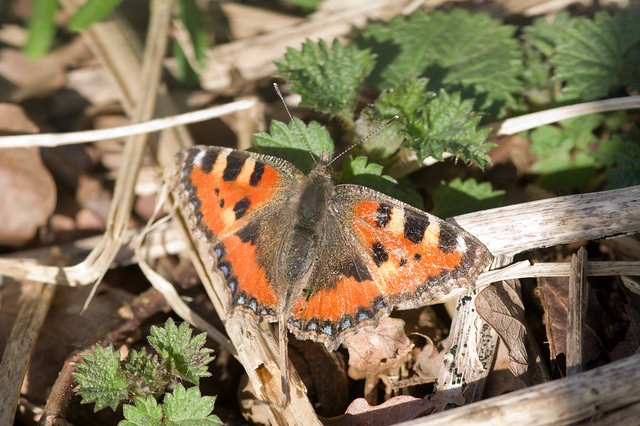 |
| A rather battered Small Tortoiseshell |
 |
| An adventurous white-lipped snail |
Violets seemed to be sprouting all around, and in amongst one clump I spotted the delicate white petals of common chickweed, before recklessly deciding that a clump of green leaves growing at the base of a birch log might prove identifiable. It turns out that they were, but it took a bit of online help in the shape of Ispot to find out that these were the leaves of the appropriately named Spring Beauty.
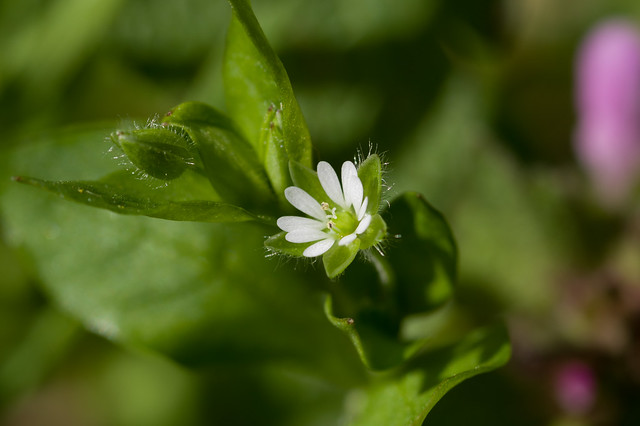 |
| Common Chickweed |
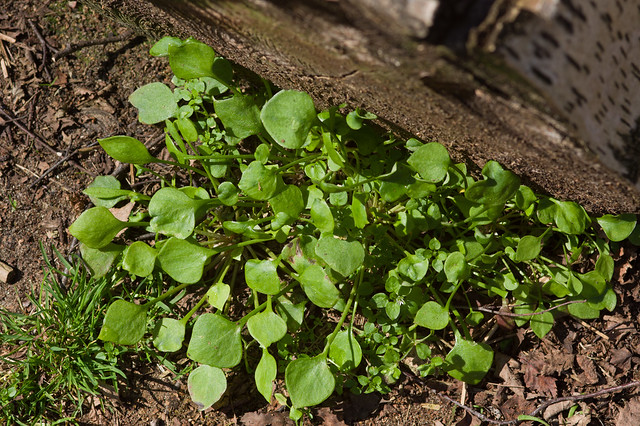 |
| Spring Beauty |
By rhis point I'd reached the target of my wanderings, the RSPB reserve at The Lodge. It's definitely not the birdiest of the RSPB reserves, but it boasts an impressive species list, thanks to good variety of habitats, and an equal variety of staff prepared to go out and look for them. On this day my main target was a colony of mining bees I knew had started to emerge, but on the way I stopped to pick some low hanging fruit n the shape of the Bell Heather that grows abundantly on the heathy parts of the reserve. I wasn't the only one with an interest in the heather, as the clump I stopped at proved to be infested with Heather Beetles filled with the joys of spring.
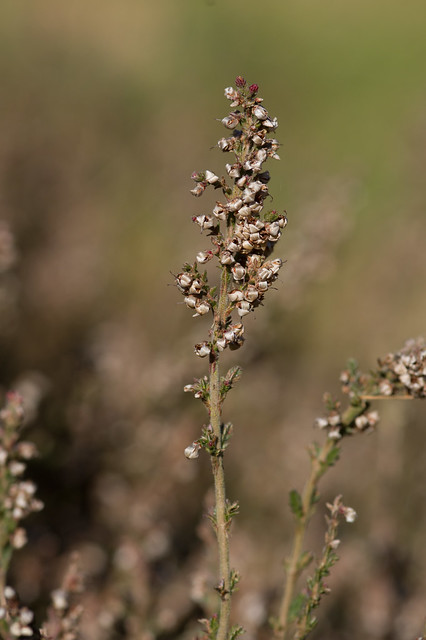 |
| Bell Heather |
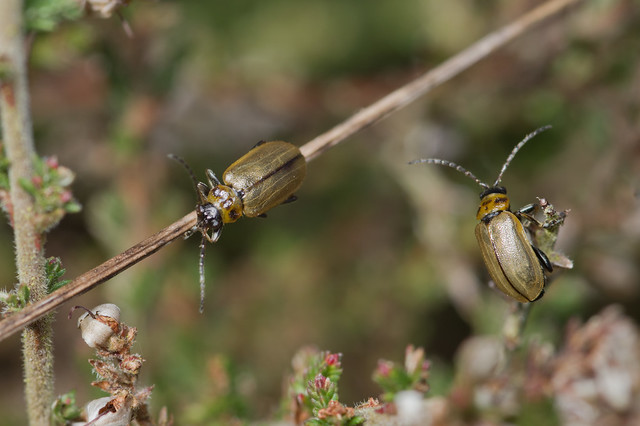 |
| Heather Beetles |
The next port of call was a tree I've come to know as the magic tree, a gnarled old sallow that is an magnet for insect life of all kinds at a time of year when supplies of nectar and pollen are at a minimum. Most of the catkins were too high up to see what was visiting them, but a couple of butterflies were taking a rest in the sunshine to digest their meals. After a bit of stalking, and in the case of the peacock quiet cursing and chasing, the butterfly list for the year was tripled, a far cry from the previous weekend's frustrations.
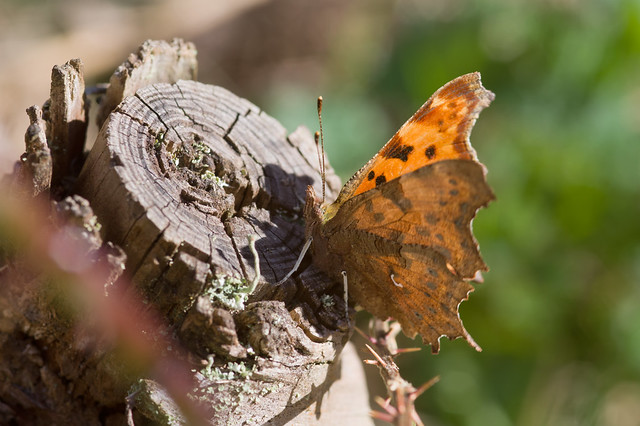 |
| Comma |
 |
| Peacock |
Also taking a break from her meal was the first bumblebee of the year, a queen Tree Bumblebee basking on the dead leaves. These recent immigrants to the UK seem to be having a particularly good spring locally, being the most abundant species by some distance so far.
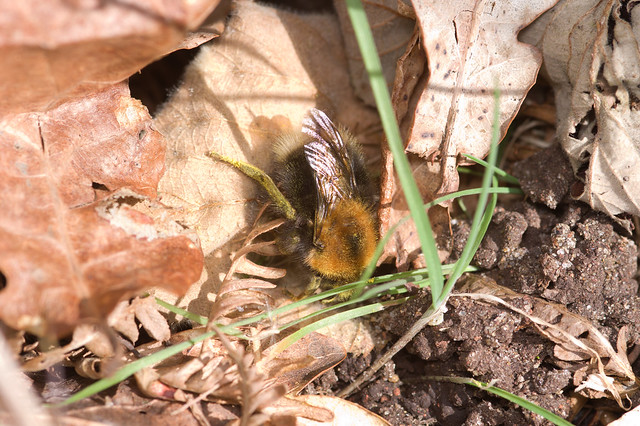 |
| Tree Bumblebee |
Finally I was nearing the solitary bees, but I still had time to get distracted on route, and by a lichen of all things! In my defence the lichen growing on the heath is pretty impressive, with branches and spikes to rival a tropical coral. Rather than the catchy title of land coral, this particular lichen has the rather ponderous name of
Cladonia portentosa. In the same photo you can see the grey tipped leaves of Bristly Haircap (how come mosses get funky names), whose spore bearing capsules were held aloft by a battalion of scarlet stalks.
 |
| Cladonia portentosa |
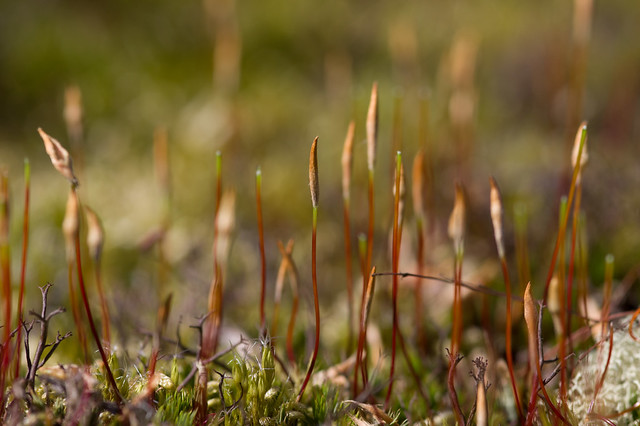 |
| The crimson stalks of Bristly Haircap |
Without any further distractions I reached the mining bees, and immediately spotted a couple of females coming in to stock up their burrows with pollen. These bees are Clark's Mining Bee, Andrena clarkella, always the earliest of the solitary bees to be on the wing in the UK, and a welcome harbinger of spring. Equally a sign of spring, but less welcome to the mining bees at least, was the colourful wasp like bee scuttling around investigating their burrows. This was a female Early Nomad, Nomada leucophthalma, and see was seeking an unattended burrow in which to lay her eggs. Once hatched the larvae will steal the pollen collected by the mining bees, as well as consuming the eggs for which it was intended.
 |
| A female Clark's Mining Bee disappearing into her burrow |
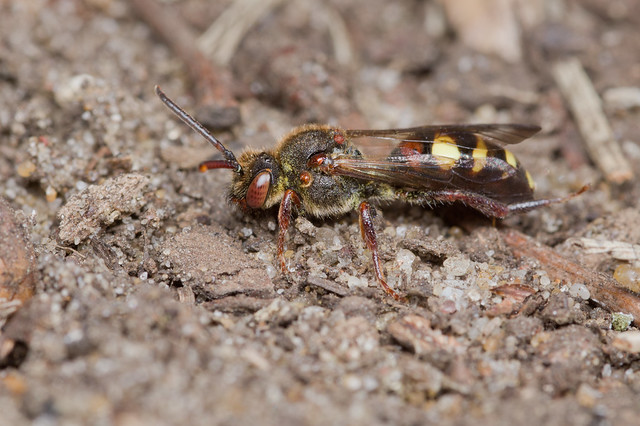 |
| Early Nomad taking a rest from looking for nests to rob |
With the main target for the day wrapped up, I headed up towards the gardens to see if I could find any extra butterflies and bumblebees. Along the way I remembered I was meant to be looking for plants, so I rattled off a couple of shots of a common nettle and the horse-chestnut buds which were just starting to burst. Nearby my second ladybird of the year, a tiny Pine Ladybird, was meandering along a fencepost
 |
| Common Nettle |
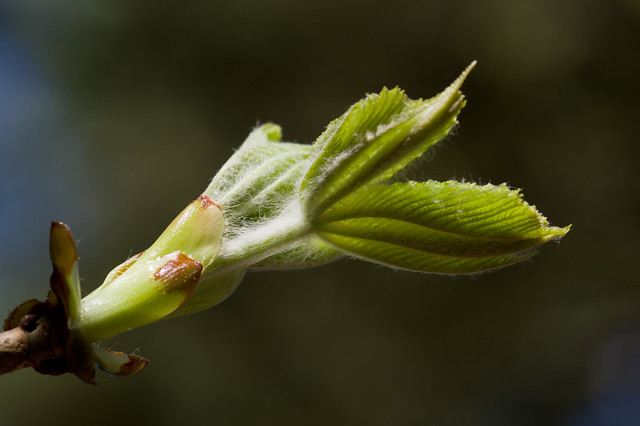 |
| Horse Chestnut |
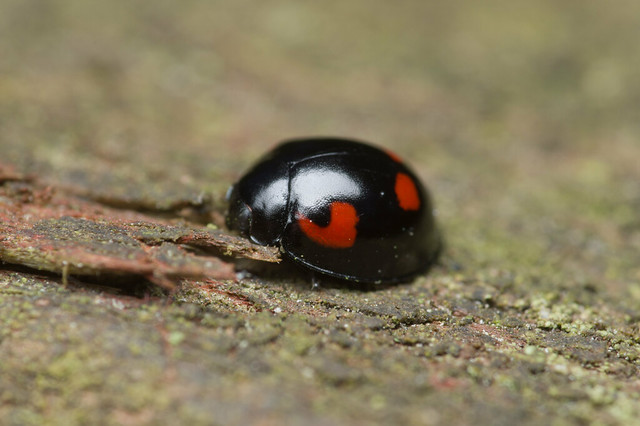 |
| Pine Ladybird |
In the gardens there were a few queen bumblebees foraging on the winter heather, mainly yet more tree bumblebees, but also a single White-tailed Bumblebee. Nearby a single early bumblebee was buzzing around some rosemary, although she looked positively sedate in comparison to the male Hairy-footed Flower bee patrolling his territory. Whilst watching the bumblebees I noticed a brimstone come skittering into view. At first I ignored it, assuming it would do what every other brimstone had done so far this year, and skip on merrily out of view. To my surprise though, it came down to feed from Scilla, although it soon resumed its fluttering when I tried to get a photo. After a couple more failed attempts it was looking like another blank was on the cards, but then he settled on a flowering bush in the garden, and remained happily feeding whilst I got into position.
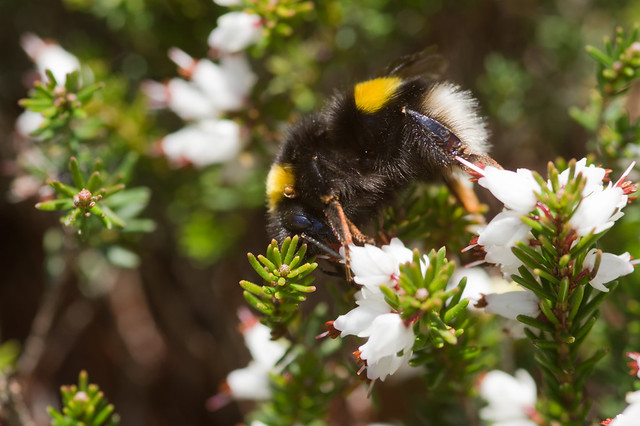 |
| White-tailed Bumblebee |
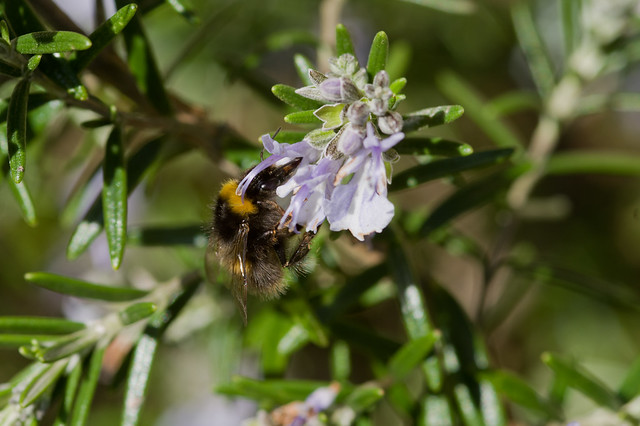 |
| Early Bumblebee |
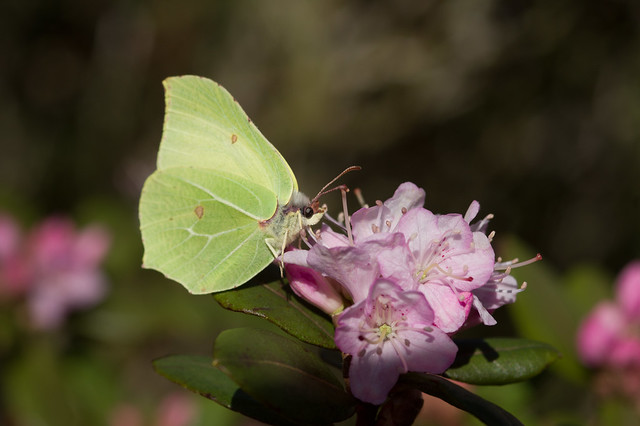 |
| A brimstone - landed!!! |
Restraining the urge to do a victory dance I started to head for home, pausing on the way out of the gardens to check out an
Eristalis hoverfly, whose tapered abdomen and yellow slippers (ok tarsi) revealed it to be
Eristalis pertinax. The rest of the walk home was fairly uneventful, until a large spider broke cover onto the footpath, before conveniently freezing in plain sight. Upon close inspection it proved to have attractive patterns of yellow and black on its abdomen, characteristic of a male
Alopecosa barbipes, or Easter Fox-Spider.
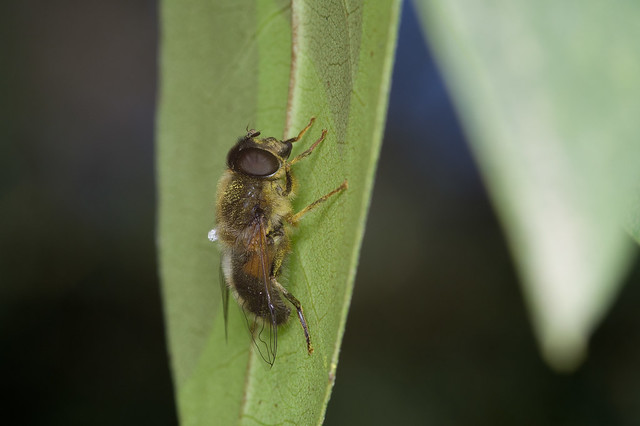 |
| Eristalis pertinax |
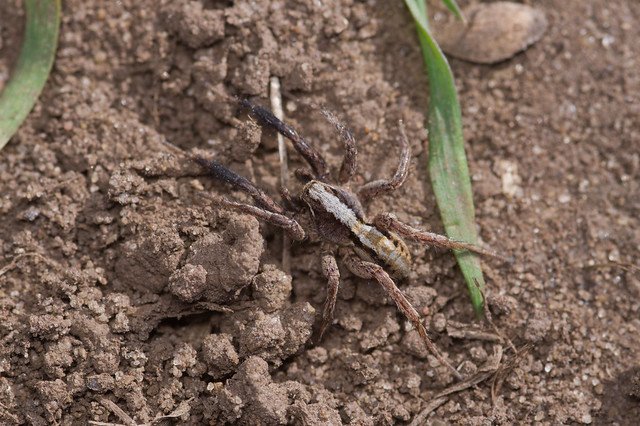 |
| Easter Fox-Spider |
Total: 146 Species - see all the photos here
Lifelist 1300 Species New additions: Cladonia portentosa, Bristly Haircap, Spring Beauty, White-lipped Snail and Easter Fox-Spider

























No comments:
Post a Comment